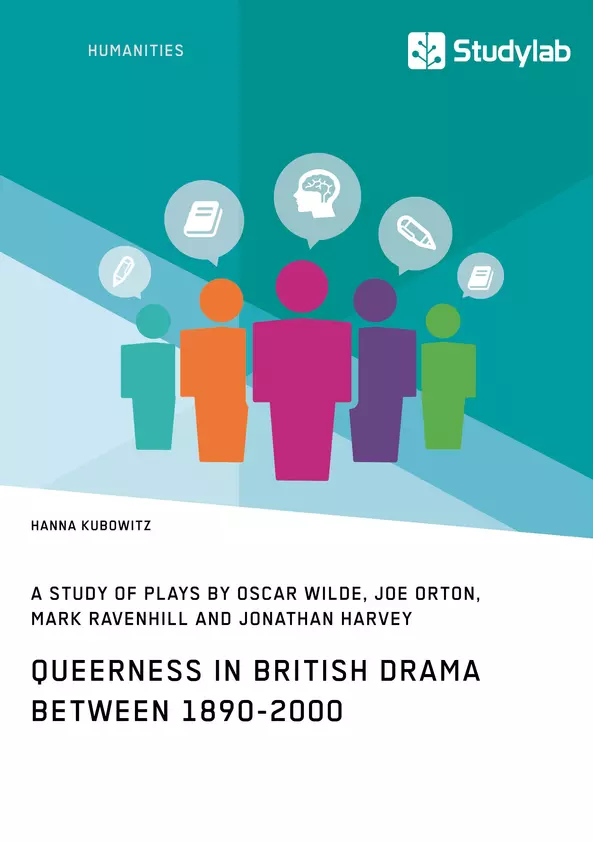This book deals with one particular aspect of British drama between the 1890s and the late 20th century: ‘queerness’. ‘Queerness’ is a term that in the last two decades has come to be used predominantly to refer to manifestations of homosexuality, male and female, and otherness.
In total, this book concentrates on four examples: The Importance of Being Earnest by Oscar Wilde, What the Butler Saw by Joe Orton, Boom Bang-A-Bang by Jonathan Harvey and Handbag by Mark Ravenhill. These works are analysed with sections concentrating on figure conception and characterisation and additionally discourse and language use. Furthermore, an introduction to drama theory, discourse theory and ‘queer theories’ will be given as well as some preliminary definitions of ‘homosexuality’, ‘queerness’, ‘heteronormativity’ and ‘otherness’.
From the text:
- Discourse Theory;
- Queer Theory;
- Oscar Wilde;
- Joe Orton;
- Jonathan Harvey;
- Mark Ravenhill
Inhaltsverzeichnis (Table of Contents)
- Notes on Abbreviations and on Quotations from the Plays
Zielsetzung und Themenschwerpunkte (Objectives and Key Themes)
This study aims to explore the representation of queerness in British drama between 1890 and 2000, focusing on the works of four prominent playwrights: Oscar Wilde, Joe Orton, Mark Ravenhill, and Jonathan Harvey.
- The evolution of queer representation in British drama over a century.
- The exploration of themes of identity, sexuality, and social acceptance.
- The impact of historical and social contexts on the portrayal of queer characters.
- The use of humor, satire, and tragedy in depicting queer experiences.
- The influence of these plays on contemporary understandings of queerness.
Zusammenfassung der Kapitel (Chapter Summaries)
This section would include summaries of each chapter, focusing on the main themes, arguments, or narrative elements of each chapter.
Schlüsselwörter (Keywords)
The primary keywords and focus topics of this study include queerness, British drama, Oscar Wilde, Joe Orton, Mark Ravenhill, Jonathan Harvey, identity, sexuality, social acceptance, humor, satire, tragedy, and historical context.
- Citation du texte
- Hanna Kubowitz (Auteur), 2004, Queerness in British Drama between 1890-2000, Munich, GRIN Verlag, https://www.grin.com/document/367460



